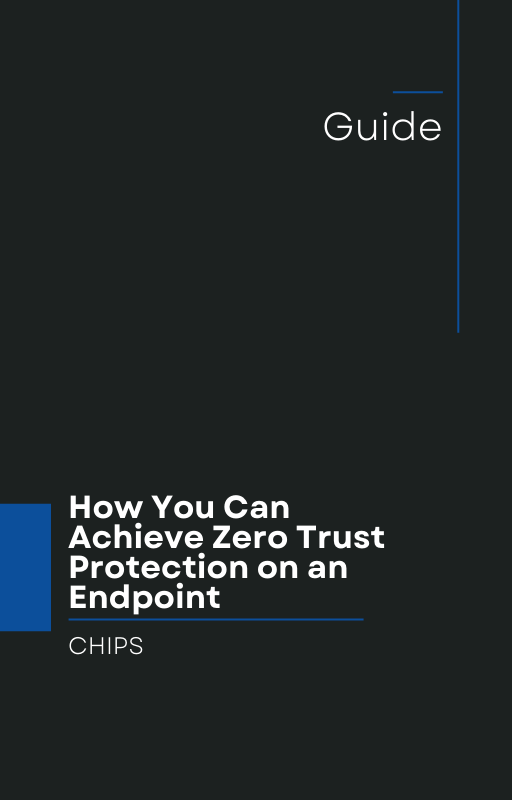In a recent article, Fox News exposed a growing threat: hackers are inserting fake apps laced with malware into Google search results, turning search itself into a delivery mechanism. Fox News+1 These malicious actors are using techniques like SEO poisoning, typosquatting, and paid ad placements to push counterfeit apps to the top of search rankings. Unsuspecting users, believing they are clicking legitimate links, end up installing malware instead.
This attack vector is subtle and dangerous. Users often trust high search rankings and credible-looking app names. Meanwhile, hackers exploit that trust to slip malicious payloads beneath the radar. And as the threat landscape evolves, simply catching malware after the fact is no longer sufficient.
The Limits of “Detect & Respond”
Traditionally, endpoint security has emphasized a “detect and respond” model:
-
Monitor endpoints for suspicious activities.
-
Raise alerts when anomalies are detected.
-
Investigate, contain, and remediate post-incident.
But in the scenario above, by the time malware is detected, it may already have launched data exfiltration, lateral movement, or other damage. The detection triggers might come too late — especially with advanced threats that evade signature-based systems or turn off logging on compromised machines.
Furthermore:
-
Attackers may employ zero-day or obfuscated malware that slips past detection scanners.
-
The “response” phase requires human intervention (investigation, containment), which takes time.
-
While response happens, damage can escalate — exfiltration of data, ransomware activation, or even propagation to other machines.
In short: reactive defense keeps you one step behind.
A Better Approach: Isolation & Containment with AppGuard
What if instead of waiting to detect malware, we prevented it from harming the system in the first place? This is the philosophy behind AppGuard, a next-generation endpoint protection solution.
How AppGuard Works
-
Zero-trust for all executables and processes
AppGuard treats every executable (whether signed or not) as untrusted by default. It confines each process to a minimal privilege sandbox, preventing it from writing to critical areas or modifying other processes. -
Isolation, not outright blocking
Rather than blocking unknown actions outright (which can break applications), AppGuard isolates them. If a legitimate app component attempts a dangerous action, it’s blocked or contained — but the rest of the app still works. -
Memory and process protections
AppGuard prevents memory injection, DLL injection, and other common techniques malware uses to hijack processes. -
Defense in depth with process segmentation
Even if malware is launched, its ability to affect the system is heavily constrained. It can’t perform destructive actions or pivot easily. -
Proven track record
AppGuard has been in operation for over 10 years, protecting high-value targets in government, critical infrastructure, and enterprises. Its techniques have been battle-tested and refined over a decade.
This means in the case of malware delivered via a fake app link in Google — even if the malware is installed or executed — AppGuard confines it, preventing it from damaging data, escalating privileges, or spreading.
Why Business Owners Must Care Now
The risks aren’t hypothetical. Attackers are using increasingly sophisticated techniques to bypass traditional defenses:
-
SEO poisoning: Hackers optimize malicious pages to rank highly in search.
-
Malvertising: Ad networks deliver malicious links or redirects, even on trusted publisher sites.
-
Typosquatting & domain spoofing: Slight variations in domain names lure users to malicious sites.
-
Zero-day and obfuscated malware: Traditional signature systems fail to catch novel or heavily altered threats.
For businesses, the consequences are profound: data breaches, regulatory fines, business disruption, reputational damage, and customer loss.
By adopting a proactive isolation strategy — rather than relying solely on detection — organizations gain a resilient defense posture. AppGuard turns endpoints into containment zones: attacks may reach the endpoint, but they cannot break out.
Moving from “Detect & Respond” to “Isolation & Containment”
Here’s how you can shift your security mindset and posture:
| Traditional Model | Next-Gen Model with Isolation |
|---|---|
| Focus on detecting malware after it executes | Focus on containing potential threats at execution |
| Alerts, human intervention, post-mortem cleanup | Automated isolation, minimal human overhead |
| Reactive and slow (damage may already occur) | Proactive: threats neutralized before they harm |
| Reliant on signatures, heuristics | Behavior-based, process-level control |
| Remediation after breach | Prevention of escalation from breach |
In short: don’t chase threats — fence them in.
Taking Action: Secure with AppGuard & CHIPS
Business owners must act decisively before they become the next headline. AppGuard’s decade of proven protection offers a clear path forward — especially for defending against stealthy, malware-laden app attacks via search results and malvertising.
At CHIPS, we specialize in enterprise security solutions and can help you:
-
Assess your current endpoint security gaps
-
Deploy AppGuard across your environment
-
Integrate it into your security operations
-
Move your strategy away from reactive detection and toward proactive isolation
If you’re ready to stop threats before they hurt you, talk with us. Let us show you how to move from “Detect & Respond” to real Isolation & Containment with AppGuard — and give your organization the protection it deserves.
Contact CHIPS today and let’s build your next line of defense.
Like this article? Please share it with others!

October 14, 2025

Comments